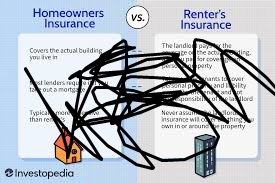
Security and safety features in a home contributes significantly towards insurance premiums. Homes that have alarm systems, smoke and carbon monoxide detectors, fire sprinklers, deadbolt locks and monitored security devices are rated as lower-risk and will usually be offered large premium discounts.
Further protection includes secure fencing, motion lighting, stiffened doors and windows, and surveillance cameras among other security controls that minimize potential theft, fire or vandalism.
These features reduce the risk of claims, which explains why they earn homeowners rewards given by insurers who seek to learn to manage risks proactively.
Besides the monetary gain, solid security mechanisms come with a sense of tranquility and lead to a more comfortable environment.
The maintenance of these measures or updating them also plays a very important role; a defective or very old alarm system cannot be offered at a discount and it is here that regular checkups, repairs and upgrades play a significant role.
Technological, procedural and structural security may directly affect the risk evaluation and rates of insurance.
Policy and amounts of coverage.
A major aspect that influences premiums is the amount of coverage chosen on a homeowners insurance policy.
Better coverage limits provide more financial protection against fire, theft, natural or liability claims, but of course carry higher monthly or annual premiums.
Home owners must balance their requirements on being comfortably covered with the amount of money charged as premiums, a reference must be made to the cost of the property being replaced and the cost of personal items.
Others are limits to liability cover, and additional living expenses should the home temporarily become uninhabitable because of damage.
Depending upon optional add-ons such as jewelry or electronic or high value collectibles coverage may also influence the cost.
It is also a planning choice: excess coverage will be an unwarranted cost and less will leave the insured (the home owner) vulnerable to loss in case of a significant event.
Insurance professionals frequently recommend a comprehensive home inventory and risk evaluation so that the best amount of coverage is come up with that is suitable to each particular property.
Other Factors Insurers May Take into Account.
In addition to the fundamental matters of location, age, condition, security and coverage, underwriters consider a number of additional factors in the determination of homeowners insurance rates.
The claims history of a homeowner can carry serious weight in terms of premiums, since repeated or recent claims can suggest increased risk in the future.
Financial responsibility is also becoming a credit score, and the higher the score, the less the premium.
The character of the occupation is also considered; property rented, half empty, or commercial commercial premises can be at an increased risk and rates may ultimately rise.
The rest include distance to emergency facilities, trampolines or swimming pools and neighbourhood risk profiles. The insurers can also consider environmental issues like flood prone areas, wild fires or earthquake prone areas.
When homeowners are very proactive in keeping a clean claims record, taking preventive action, and showing good management of their property, lower premiums are often provided, which is why there is so much emphasis on being very diligent and minimizing risk.
